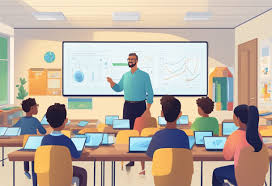Media literacy has emerged as an essential competency for 21st-century learners, and the thoughtful teacher recognizes that kids animated shows provide ideal opportunities for developing these critical skills. Rather than treating animated content as mere entertainment or simple educational tools, sophisticated educators use these programs as texts for analysis, criticism, and deeper understanding of how media shapes perceptions and communicates messages. This approach transforms passive consumption into active intellectual engagement.
The visual literacy component of animated content offers particularly rich educational potential. Teachers guide students in analyzing how animation techniques, color palettes, character design, and visual symbolism contribute to storytelling and message delivery. This detailed examination helps children recognize the intentionality behind visual choices in all media they encounter, fostering more sophisticated understanding of how images influence emotions and perceptions.
Narrative analysis naturally extends from animated content, with teachers helping students identify traditional story structures, character archetypes, and thematic patterns. This critical examination helps children recognize how stories across all media follow similar patterns while developing expectations about how narratives typically unfold. This awareness enhances comprehension skills that transfer directly to reading literature and understanding complex texts across subject areas.
Commercial awareness represents another crucial dimension of media literacy that teachers cultivate through animated content analysis. Many children’s animated programs exist primarily to sell merchandise, and discerning educators help students recognize marketing strategies embedded within entertainment. This critical awareness helps young people develop healthier relationships with consumer culture and make more intentional choices about which messages they internalize.
Representation analysis forms an increasingly important component of media literacy instruction. Progressive teachers guide students in examining who appears in animated content, how different groups are portrayed, whose perspectives receive emphasis, and whose experiences remain invisible. This critical examination helps students recognize bias in seemingly neutral entertainment and develops greater awareness of inclusivity issues across all media forms.
Message identification skills develop naturally when teachers ask students to articulate the explicit and implicit messages communicated through animated content. Children learn to distinguish between the surface-level story and deeper values being promoted through character actions and narrative resolutions. This separation of entertainment from embedded messaging creates more discerning media consumers who actively evaluate what they’re being taught through entertainment.
Production context awareness adds another layer to comprehensive media literacy education. Teachers help students understand who creates animated content, what their motivations might be, and how production decisions influence the final product. This behind-the-scenes perspective demystifies media creation and helps students recognize that all content reflects specific choices made by human creators with particular objectives.
Technical appreciation emerges when teachers guide students in recognizing the craftsmanship involved in quality animation. Understanding the different animation techniques—from traditional hand-drawn animation to stop-motion to various digital approaches—helps students appreciate the artistry involved in creating animated content. This awareness often inspires creative expression and experimentation with similar techniques in student projects.
Historical contextualization of animated content adds depth to media literacy instruction. Experienced educators help students understand how animation has evolved over time and how historical contexts influenced the themes, characters, and visual styles of different eras. This historical perspective helps students recognize both problematic elements in older content and appreciate groundbreaking innovations that transformed the medium.
Cross-media comparison represents an advanced media literacy skill that teachers develop through animated content analysis. By examining how the same stories appear across different media formats—books, animated adaptations, live-action films—students develop sophisticated understanding of how medium-specific characteristics influence storytelling. This comparative approach highlights the unique capabilities and limitations of different communication forms.

